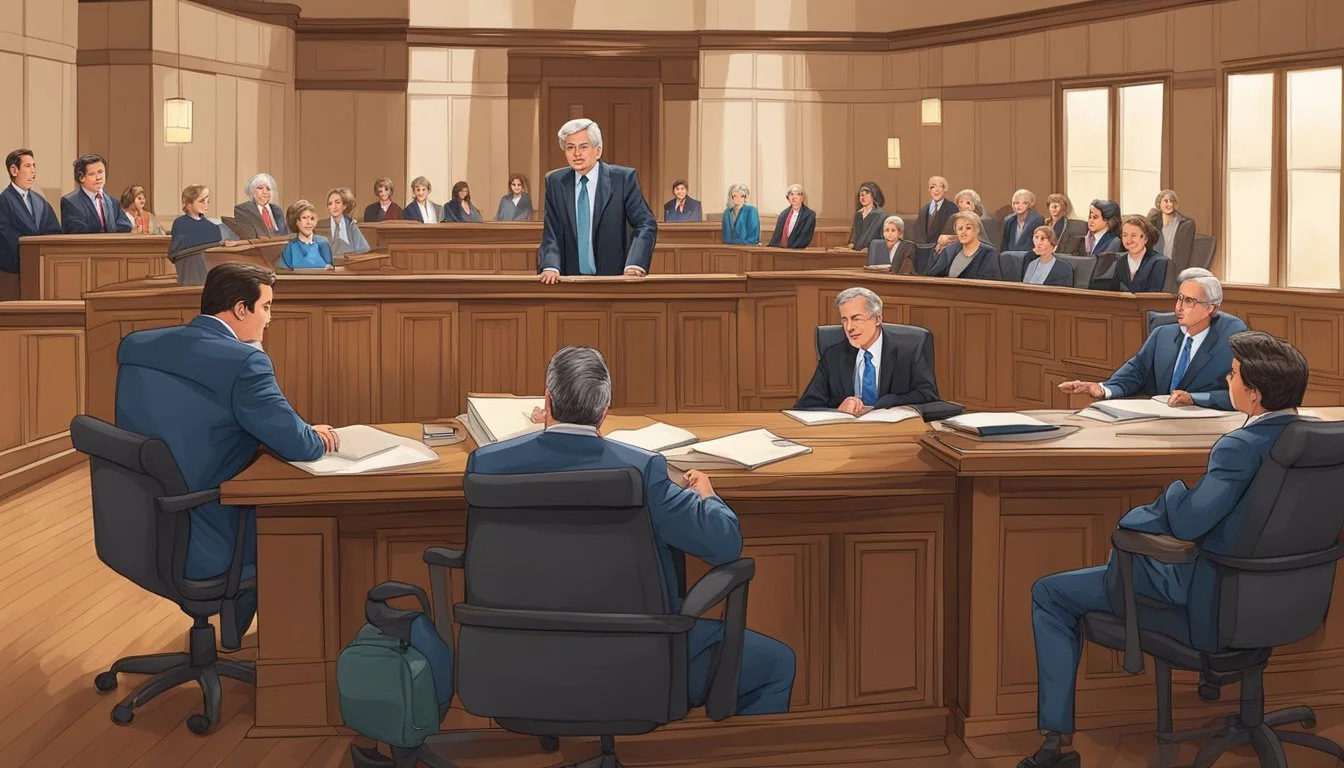JonBenét's Killer Unmasked? Forensic Expert Cyril Wecht Drops Bombshell, Family Implicated
JonBenét Ramsey's unsolved murder has captivated the public for decades. Dr. Cyril Wecht, a renowned forensic pathologist, offers his expert analysis in the book "Who Killed JonBenét Ramsey?" Wecht's examination of the evidence leads him to conclude that someone in the Ramsey household was likely responsible for JonBenét's death.
The book, co-authored with journalist Charles Bosworth Jr., provides a detailed look at the forensic evidence surrounding the case. Dr. Wecht's credentials as a leading forensic expert lend weight to his findings and interpretations. His analysis challenges some of the official conclusions and presents new theories about what may have happened on that fateful night in 1996.
Wecht's work on the JonBenét Ramsey case showcases his extensive experience in forensic pathology. The book delves into the complexities of the investigation, highlighting potential missteps and offering alternative explanations for the evidence found at the crime scene. Readers are given a unique perspective on one of America's most infamous unsolved murders.
Background of the Case
The JonBenét Ramsey case shocked the nation in 1996. This section examines key aspects of the victim, the timeline of events, and the initial police response that set the stage for one of America's most infamous unsolved murders.
Profile of JonBenét Ramsey
JonBenét Patricia Ramsey was a six-year-old girl living in Boulder, Colorado. Born on August 6, 1990, she was known for her participation in child beauty pageants. JonBenét came from a wealthy family, with her father John Ramsey being a successful businessman.
The young girl had blonde hair and blue eyes, often seen in glamorous outfits during her pageant performances. Her mother, Patsy Ramsey, was a former beauty queen who actively supported her daughter's involvement in these competitions.
JonBenét attended Martin Park Elementary School and was described as a lively, outgoing child by those who knew her.
Timeline of Events
On December 25, 1996, the Ramsey family celebrated Christmas at their home. They attended a party at a friend's house that evening before returning home.
December 26, 1996:
5:52 AM: Patsy Ramsey calls 911, reporting her daughter missing
1:05 PM: Detective Linda Arndt asks John Ramsey to search the house
1:05 PM: John Ramsey discovers JonBenét's body in the basement
JonBenét was found with a garrote around her neck, duct tape over her mouth, and signs of sexual assault. The official cause of death was asphyxiation due to strangulation associated with craniocerebral trauma.
Initial Police Response
The Boulder Police Department arrived at the Ramsey home shortly after Patsy's 911 call. Officers conducted an initial search of the house but did not find JonBenét.
Mistakes were made in securing the crime scene. Friends and family were allowed to enter and move freely through the house, potentially contaminating evidence.
The police initially treated the case as a kidnapping, focusing on the ransom note found in the house. This approach changed when JonBenét's body was discovered.
Detectives faced criticism for not separating and interviewing the parents immediately. The Ramseys were not formally interviewed until four months after the murder, raising questions about the investigation's handling.
Key Evidence
The JonBenét Ramsey case hinges on crucial physical evidence and a controversial ransom note. These elements have been extensively analyzed by forensic experts, including renowned pathologist Dr. Cyril Wecht.
The Ransom Note Analysis
The ransom note found in the Ramsey home has been a focal point of the investigation. It was unusually long for a kidnapping note, spanning three pages. Handwriting experts have scrutinized the note, comparing it to samples from the Ramseys and other suspects.
The note's content and language have raised questions. It demanded $118,000, coincidentally close to John Ramsey's bonus amount. This detail led some investigators to suspect an inside job.
Dr. Wecht has pointed out peculiarities in the note's phrasing and terminology. He noted that certain expressions seemed atypical for a kidnapper but potentially familiar to the Ramseys.
Physical Evidence at the Scene
The physical evidence in JonBenét's murder has been subject to intense scrutiny. Her body was found in the basement, contradicting the kidnapping scenario presented in the ransom note.
Dr. Wecht, as a forensic pathologist, has highlighted key findings from the autopsy. These include:
A skull fracture
Evidence of sexual assault
Marks on her neck from a garrote
DNA evidence found on JonBenét's clothing has been a source of ongoing debate. While some argue it points to an intruder, others, including Dr. Wecht, have questioned its significance given potential contamination issues.
Fibers and other trace evidence collected from the crime scene have been analyzed extensively. Some matched items in the Ramsey home, complicating the intruder theory.
Cyril Wecht's Involvement
Renowned forensic pathologist Dr. Cyril Wecht played a significant role in examining the JonBenét Ramsey case. He offered his expertise to analyze the autopsy findings and develop theories about the circumstances of her death.
Cyril Wecht's Credentials
Dr. Cyril Wecht is a highly respected figure in forensic pathology. He has consulted on numerous high-profile cases throughout his career. Wecht's reputation for thorough analysis and clear explanations made him a valuable contributor to the JonBenét Ramsey investigation.
His extensive experience in forensic medicine allowed him to provide unique insights into the physical evidence. Wecht's involvement brought a fresh perspective to the case, challenging some of the initial conclusions drawn by investigators.
Analysis of the Autopsy Report
Dr. Wecht conducted a detailed review of JonBenét's autopsy report. He focused on key physical findings to reconstruct the sequence of events leading to her death. Wecht's analysis suggested that the head injury occurred before the strangulation, contradicting some earlier theories.
He noted specific details about the nature of the injuries that provided crucial information about the murder weapon and the force used. Wecht's interpretation of the evidence led him to develop a comprehensive theory about the crime.
His findings were published in the book "Who Killed JonBenet Ramsey?", where he explained complex medical concepts in accessible terms. Wecht's work contributed significantly to public understanding of the forensic aspects of this unsolved case.
Investigation and Theories
The JonBenét Ramsey case spawned numerous theories and lines of investigation. Police, private investigators, and experts like Dr. Cyril Wecht explored various possibilities regarding the perpetrator and circumstances of the crime.
Intruder Theories
Some investigators proposed that an intruder killed JonBenét. Evidence supporting this theory included a broken basement window and unidentified DNA found on the victim's clothing. Proponents argued that an outsider could have entered the home, committed the crime, and escaped undetected.
The Boulder Police Department investigated several potential suspects, including a local sex offender and a former family friend. However, these leads failed to produce conclusive evidence.
Critics of the intruder theory pointed to the lack of signs of forced entry and the improbability of an outsider navigating the house undetected.
Family-Member Theories
Dr. Cyril Wecht and others suggested that a family member may have been involved in JonBenét's death. This theory arose from inconsistencies in witness statements and physical evidence at the crime scene.
Investigators scrutinized John and Patsy Ramsey's behavior and statements. Some experts, including Wecht, found aspects of the parents' accounts suspicious.
The ransom note, written on paper from the Ramsey home, became a focal point. Handwriting analyses yielded conflicting results, further complicating the investigation.
Other Theories
Alternative theories emerged as the case remained unsolved. Some speculated about the involvement of JonBenét's older brother, Burke, though he was officially cleared by DNA evidence in 2008.
Conspiracy theories linking the murder to child exploitation rings gained traction in some true crime communities. These claims lacked substantial evidence and were dismissed by law enforcement.
Some investigators proposed that JonBenét's death was accidental, followed by a cover-up. This theory attempted to reconcile conflicting evidence but remained unproven.
Public and Media Response
The JonBenét Ramsey case captivated public attention and sparked intense media coverage. The mysterious circumstances surrounding her death led to widespread speculation and debate.
Media Influence on the Case
Extensive media coverage shaped public perception of the Ramsey case. News outlets frequently reported on developments, including details about the ransom note and crime scene evidence. Television specials and documentaries examined various theories about JonBenét's death.
The media scrutiny placed the Ramsey family under a microscope. Their behavior and statements were analyzed extensively. Some outlets portrayed the parents as potential suspects, while others focused on alternative theories.
True crime enthusiasts dissected every aspect of the case online. Internet forums and social media platforms became hotbeds for amateur sleuths to share theories and debate evidence.
Public Perception and Opinion
Public opinion on the case remained divided. Many believed the Ramsey parents were involved, citing suspicious behavior and inconsistent statements. Others defended the family, arguing that an intruder was responsible for JonBenét's death.
The ransom note became a focal point of public interest. Its unusual length and content fueled speculation about the author's identity. Handwriting experts offered conflicting opinions on whether Patsy Ramsey wrote the note.
Some members of the public criticized law enforcement's handling of the investigation. Questions arose about potential contamination of the crime scene and missed evidence. This led to ongoing debates about the competence of the initial investigation.
Legal Outcomes and Implications
The JonBenét Ramsey case left a lasting impact on the legal system and forensic practices. Key developments emerged from official statements and decisions, while forensic methodologies underwent scrutiny and refinement.
Official Statements and Decisions
The Boulder Police Department faced criticism for their handling of the initial investigation. In 2008, then-District Attorney Mary Lacy issued a public apology to the Ramsey family. She cited new DNA evidence that suggested an unknown male was responsible for JonBenét's death.
This statement effectively exonerated the Ramsey family from official suspicion. However, it did not lead to any arrests or prosecutions. The case remained open, with periodic reviews and updates from law enforcement agencies.
Impact on Forensic Practices
The Ramsey case highlighted the importance of proper evidence collection and preservation. Forensic pathologists, including Dr. Cyril Wecht, emphasized the need for standardized protocols in child homicide investigations.
Key changes included:
Enhanced training for first responders
Improved DNA collection techniques
Stricter chain of custody procedures
These reforms aimed to prevent contamination and ensure more accurate analysis in future cases. The Boulder Police Department implemented new forensic technologies and methodologies as a direct result of lessons learned from the Ramsey investigation.
Legacy and Cultural Impact
The JonBenét Ramsey case has left an indelible mark on American true crime culture. Dr. Cyril Wecht's involvement and analysis brought renewed attention to the unsolved murder decades after it occurred.
Wecht's book "Who Killed JonBenét Ramsey?" sparked fresh debate about the case. It challenged existing theories and presented new perspectives on the evidence, keeping public interest alive.
The case has inspired numerous documentaries, books, and television specials. Many of these productions have featured Wecht's insights and theories, further cementing his role in the ongoing narrative.
JonBenét's story continues to captivate true crime enthusiasts. Online forums and social media groups actively discuss the case, often referencing Wecht's work and conclusions.
The tragedy has also influenced discussions about child beauty pageants and media sensationalism. It raised questions about the ethics of such competitions and the intense scrutiny placed on young participants.
Wecht's forensic analysis has become a benchmark in the true crime community. His approach to the Ramsey case is often cited in discussions of other unsolved murders, highlighting its lasting impact on the genre.
The case remains a touchstone for debates about wealth, privilege, and justice in America. Wecht's work has contributed to these ongoing conversations, ensuring the tragedy's place in cultural memory.


